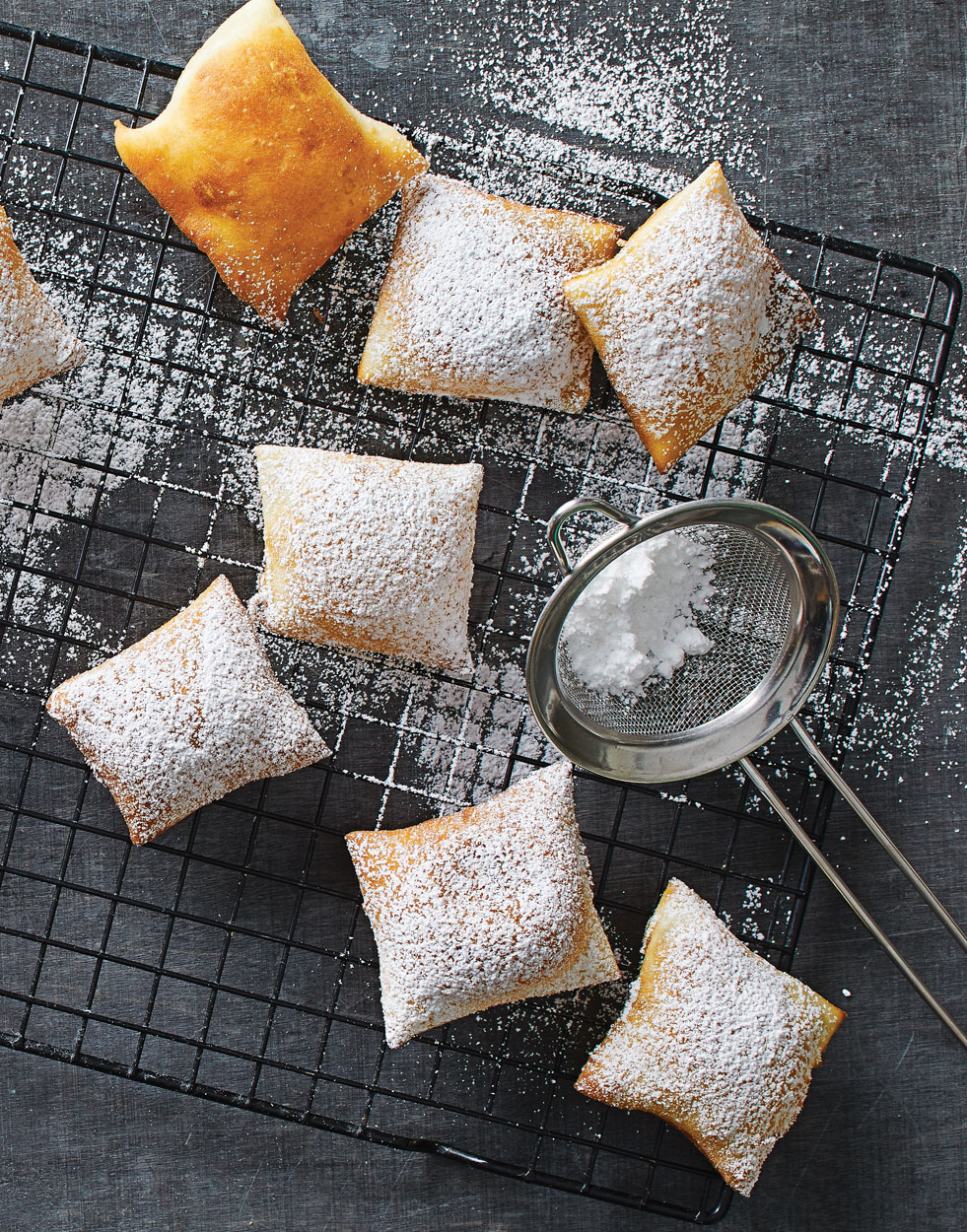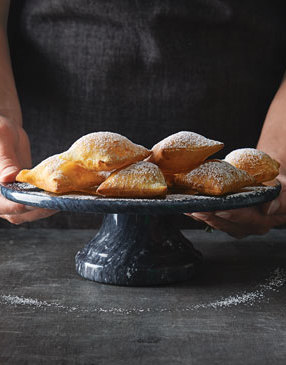
Breakfast / Brunch
Beignets
What's a beignet? A beignet [ben-YAY] is a thin square of yeast dough that’s deep-fried for a short time at a high temperature. Yes, it’s every bit as good as it sounds, and it’s just as easy to whip up.
You might be asking, “What’s so great about beignets?” Let’s just say the magic is in the dough. Beignet dough is a yeast dough, where the yeast is constantly working; it only stops after heat forces one last burst. And the hot oil the dough is fried in actually activates the yeast in the beignets, producing a gas that can’t escape. That gas causes it to puff up like a hollow pillow for its traditional look. Pretty cool, huh?
For ease, make the dough a day ahead. Then whenever you’re ready for some fried goodness all you need to do is roll, cut, and fry. Also, since it’s a thin dough, a batch cooks up in about 90 seconds. We know nothing beats the beignets you get in New Orleans. But grab some high-octane chicory coffee to serve with these fried delicious morsels, and you might start feeling like you’re actually enjoying a traditional Big Easy breakfast in the French Quarter.
Ingredients
SPRINKLE:
ADD:
STIR IN:
Test Kitchen Tips
Simple to mix and very flexible, this dough can be chilled for 2–3 days before frying. And you can fry half the dough one day and half another day.
Heat the oil slowly. It can take up to 30 minutes to reach 375° over medium, and the temperature needs to stay there.
Beignets must be eaten warm — trust us. If you’re needing a little extra time, preheat your oven to 200° and place beignets on a sheet pan lined with paper towels. We suggest warming them in the oven for not more than 15 minutes. Enjoy those tasty beignets soon or else they’ll be tough.
Instructions
Sprinkle yeast over warm water in a bowl; add 1 tsp. sugar and whisk until dissolved. Let yeast mixture stand 10 minutes. (Yeast will bubble slightly in center.)
Add milk, ⅓ cup sugar, egg, butter, vanilla, and salt to yeast mixture; stir to combine.
Stir in flour, 1 cup at a time, stirring until no flour is visible before adding more. (Dough will be lumpy after adding the first cup of flour.)
Continue adding flour in 1 cup increments and stirring; dough will start to thicken. (You may need to use your hands to work in the last cup of flour.)
Coat a bowl with butter.
Transfer dough to prepared bowl (dough will be sticky); turn to coat. Cover bowl with plastic wrap and chill 1½ hours or overnight.
Divide chilled dough in half. Place one half of dough on a heavily floured work surface to rest at room temperature, 10 minutes; cover remaining half and chill until ready to use.
Heat 1½ inches of oil in a pot to 375° over medium.
Roll dough, using a heavily floured rolling pin, to ⅛–¼-inch thick (dough will be hard to roll at first).
Loosen dough, using a bench scraper, around entire circle. Slip hands under dough and lift dough completely to put air between dough and counter.
Lightly roll dough again, making sure it’s even and ⅛–¼-inch thick.
Trim edges of dough, using a pastry wheel, and cut remaining dough into 2½-inch squares.
Lift dough squares with a metal spatula and place into hot oil one at a time, making sure not to overcrowd the pot. (Dough slides to the bottom but pops up to the surface in about 5 seconds).
Fry dough, turning frequently to brown evenly, until both sides are golden brown and puffed up, 1–2 minutes; transfer beignets to a paper-towel-lined plate.
Sprinkle hot beignets heavily with powdered sugar.
Fry remaining dough, in batches, adjusting heat to keep oil at 375°.

Rolling the dough thin keeps the inside from being cakey, while rolling the dough evenly helps create an even puff as you fry. Lightly run your hands over the dough for uneven spots. If you find any variations, simply roll those areas again.

Relaxing is key for a better “puff.” First, loosen the dough from the counter. Then slip your hands under the dough, and lift about a foot into the air, turn and repeat from the other side. This allows the dough to shrink back to its natural size.
Nutritional Facts
Nutritional Facts
Per Beignet
Calories: 56
% Daily Value*
Total Fat 2g 3%
Saturated Fat 1g 5%
Cholesterol 9mg 3%
Sodium 24mg 1%
Carbs 9g 3%
Protein 1g
*Percent Daily Values are based on a 2,000 calorie diet.